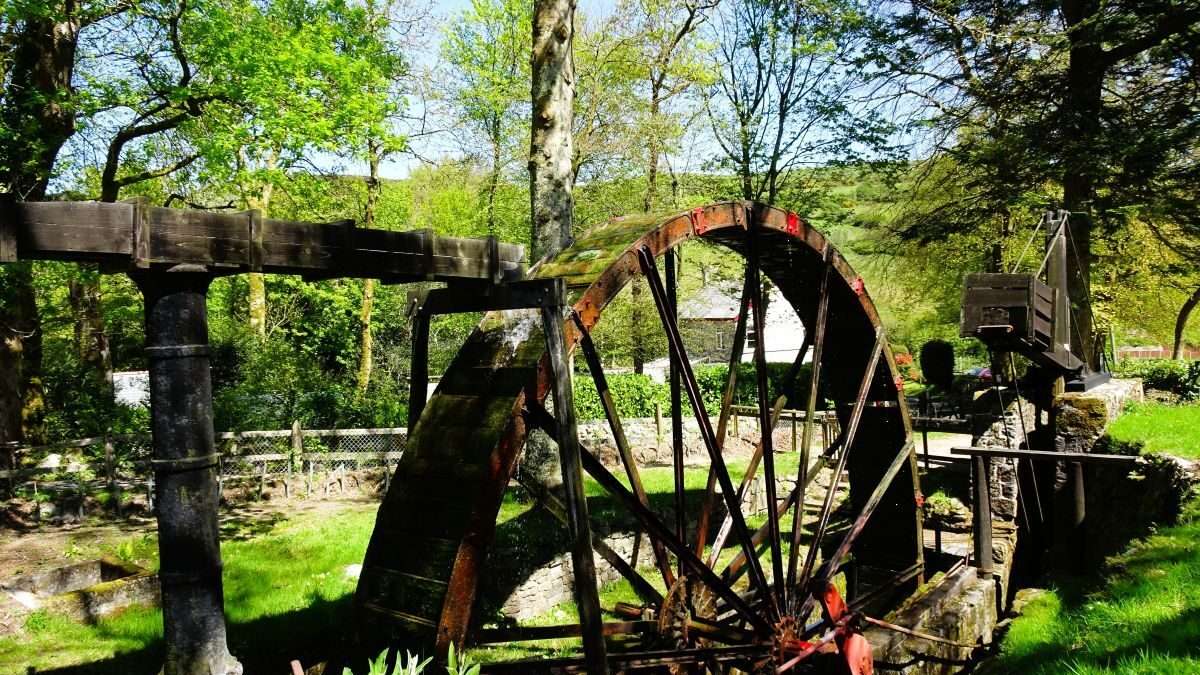I’ve always been intrigued by Cornwall’s china clay industry. So was delighted when scrolling through Instagram to discover creative writing workshops being held at Wheal Martyn Clay Works and Museum.
I took part in two out of three sessions. The second, Mr Word Loft, and I attended together, as it was about heritage writing and incorporated a private tour of the country park.
At first sight, I was captivated by the twenty-six-acre visitor attraction near St Austell. White statues depicting workers from yesteryear form a welcoming group that stand beside the conical Discovery Building, stone chimney stack, and ruins.
Exhibits of outmoded apparatus are a talking point on the way to the history and nature trails. Our guide told us that not all are typical of clay mining production, but are fascinating nonetheless.
Most remarkable are huge ancient red plunger pumps, used to propel clay slurry from the bottom of shafts. Interestingly, the device was developed by Richard Trevithick, the steam locomotion pioneer.
Just through the gate, the thirty-five-foot water wheel from the 1880s turns, creating a clanking and trickling sound as water splashes around its breadth. Originally, metal flat rods connected with the wheel’s axle, which, with every turn, powered the pumping station uphill.
Wildflower-edged pathways are shaded with mature trees in a tranquil atmosphere. Our guide gave us facts about the site in a relaxed and cheery way as we trekked up past a smaller watermill. Further on, there is a pond, which is home to newts, frogs and dragonflies, where smaller insects skim over its surface.
Streams run through woodlands, the water a milky turquoise, created by clay sediment, tinged by hues of surrounding greenery, reminding me of the colours I’ve seen on Venice’s waterways when on holiday.
There was much to see in a short time, and on a hot day, it was refreshing to be shown through a cool, narrow tunnel designed to channel the flat rods; old ones hang on a wall outside.
We were eager to see views of the pit. On the way, I noticed the children’s challenge trail, but we will explore that when we return with our seven-year-old grandson.
At the top, it’s certainly a spectacular panorama, flashed with yellow gorse harmonising with the grey granite landscape. The vicinity exudes an aura and energy, enhanced by sounds hundreds of feet below, of hammering and droning machinery echoing to the quarry’s rim.
Feeling exhilarated, we ambled back, taking in the slurry pits, settling tanks, and the pan kiln, which is sixty-seven metres long. The tour ended in the indoor museum, where the uses of clay are expanded upon. Traditionally, it was used in papermaking, while today ceramic wares are the main market, especially sanitary items, tiles and crockery. I was also surprised to learn it is in paint, polymers, plastics, medications and cosmetics, including my favourites, scented bath products.
We thanked and said goodbye to our escort, tucked into cake and tea at the cafe, before meeting up with the tutor for the heritage writing part. It was an absorbing and inspiring two hours, and a splendid end to a perfect day.
Best wishes,
Sue. X

